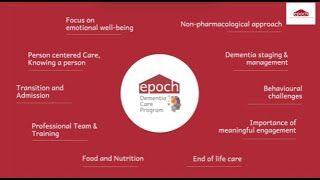What is Dementia?

Dementia occurs as a result of a disease process that increasingly damages the brain over time. Signs and symptoms of dementia result when once-healthy neurons (nerve cells) in the brain stop working, lose connections with other brain cells, and die. While everyone loses some neurons as they age, people with dementia experience far greater loss.
Dementia is a syndrome (usually of a chronic or progressive nature) in which there is deterioration of cognitive functioning (thinking, remembering, and reasoning) and behavioral abilities. This loss is to such an extent that it interferes with a person's daily life and activities. These functions include memory, language skills, visual perception, problem solving, self-management, and the ability to focus and pay attention. The impairment in cognitive function is commonly accompanied, and occasionally preceded, by deterioration in social behaviour, motivation or emotional control, and their personalities may change. These difficulties occur because nerve cells (neurons) in parts of the brain involved in cognitive function have been damaged or destroyed.. Consciousness is not affected.
While dementia is more common as people grow older (up to half of all people age 85 or older may have some form of dementia), it is not a normal part of aging. Many people live into their 90s and beyond without any signs of dementia.












